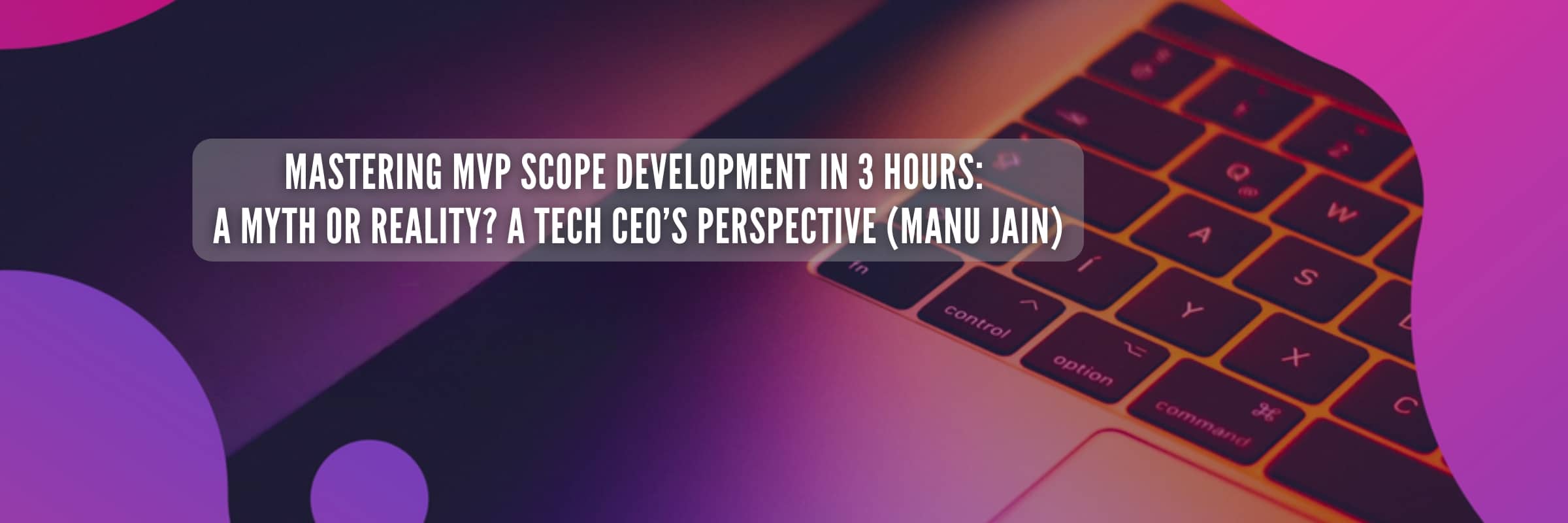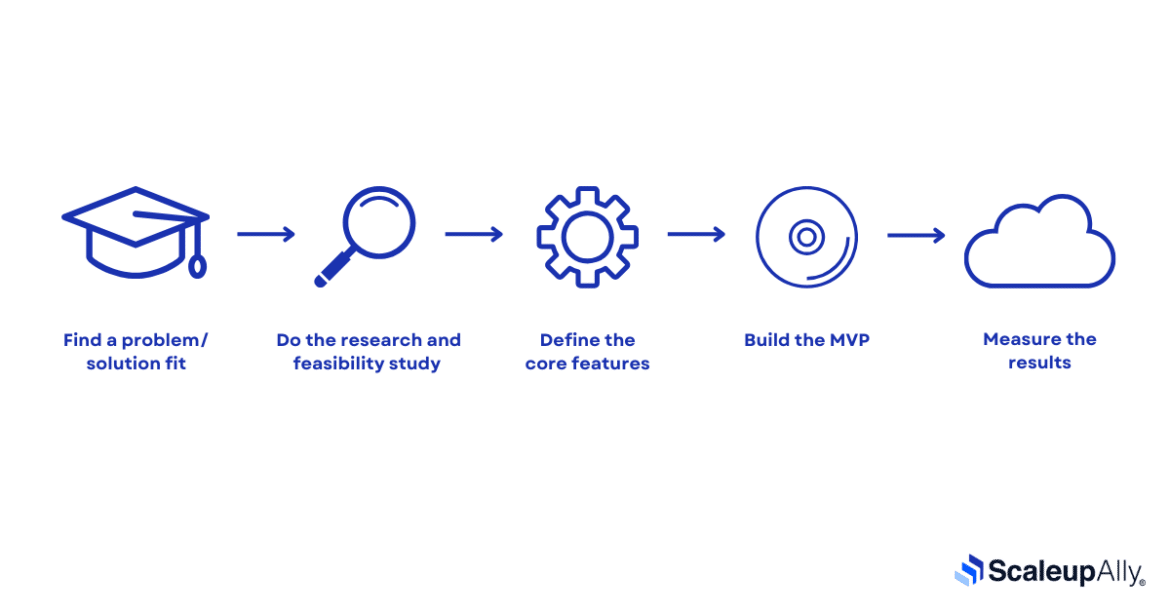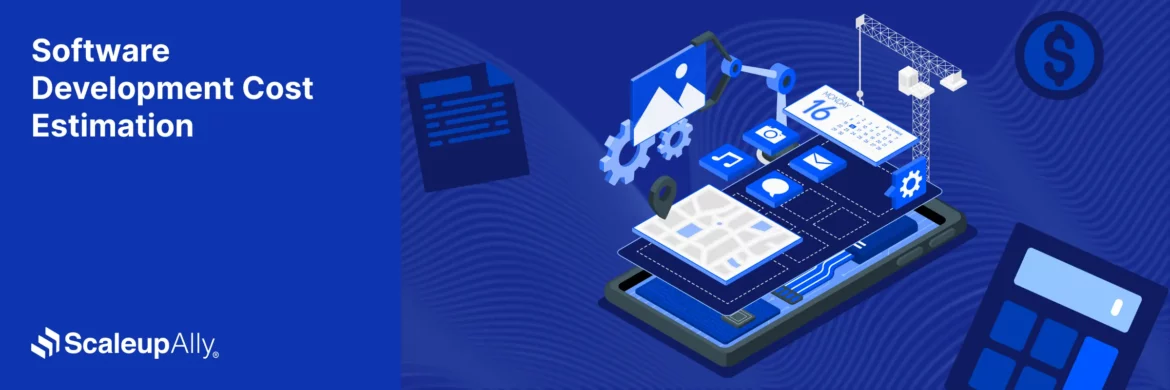
Mastering MVP Scope Development in 3 Hours: A Tech CEO’s Perspective (Manu Jain)
Manu Jain | September 8, 2024 , 11 min read
Table Of Content
As we are entering the fifth industrial revolution, the cognitive abilities of humans will be tested against the machine’s intelligence. In this scenario, the commercialisation of many artificial intelligence commodities are becoming common.
World of the internet, businesses, human capabilities and AI are at a crossroads, and whoever bridges all four, will rule the fifth! With this, everything is now at full steam ahead, especially those who are brimming with new ideas.
For the ambitious, this is the best time to dive into their ambition with a strategic plan.
Who knows, you might outdo yourself! In this scheme of things, Time is the honored King. Every hour counts, every dollar spent is scrutinized, and developing a Minimum Viable Product (MVP) with the perfect scope can make or break an early-stage success.
As a tech CEO who has navigated this journey multiple times, I’ve learned that the key to a successful MVP lies in a delicate balance of ambition and practicality.
Understanding the MVP Mindset
- Understanding the MVP Mindset
- What are the benefits of having an MVP?
- Have no MVP! What possible challenges would arise?
- Addressing Key Questions and Prerequisites before MVP Scope Development
- The Actual 3-Hour MVP Scope Development Blueprint
- Post 3-Hour MVP Scope Development Sprint
- Some examples from ScaleupAlly
- Wrapping Up
For the uninitiated, 9 out of 10 startups are destined to fail. Let that sink in!
There is more! According to CB Insights, 42% of startups fail because there is no clear understanding of what the market actually needs. And startups that prioritize MVP scope development have a 70% success rate, reveals Harvard Business Review.
Hence, it is imperative to be acutely precise in the planning. Enter, MVP! Before diving into the specifics, let us understand what MVP Scope Development is. It’s surely not about building a scaled-down version of your final product!
MVP validates your product idea with minimal key features. Ruthless prioritization and a relentless focus on delivering value to early adopters and getting as much feedback as necessary to further develop the product to make it a market fit.
To establish the context, I would like to reiterate Laozi’s quote “A journey of one thousand miles started out from one single step.”

What are the benefits of having an MVP?
1. Risk Mitigation: Launching an MVP allows you to test the basic design of your product with minimal resources, reducing financial risk and the possibility of failure.
2. Feedback Loop: An MVP opens up a direct line to your customers, allowing you to gather actionable feedback and insights that are vital to the development of your product.
3. Faster Time to Market: With an MVP, you can beat competitors to market, establish your presence and start the learning process faster with a full-featured product.
4. Focus on Core Value: Developing an MVP compels you to focus on the core value proposition of your product, ensuring that each feature aligns with what customers really need.
5. Cost Efficiency: Developing an MVP requires only a fraction of the resources for a complete product, making it a cost-effective option for startups and established businesses alike. If they put their minds on priorities, companies can easily allocate their resources well and avoid overspending in the early stages of development
6. Easier Investment Attraction: An MVP can serve as a proof of concept for potential investors, indicating that there is market interest and that the product has potential for growth. This tangible evidence can facilitate funding for further development and scalability.
7. Validation of Market Demand: By demonstrating key features for early adopters, an MVP helps validate market demand for a product before making significant feature commitments This proof of concept acts as an evidence that can guide future development and marketing strategies.
Have no MVP! What possible challenges would arise?
1. Uncertain Product-Market Fit: If you don’t test your product with real users, you run the risk of creating something that may not resonate with your target market.
2. Increased Risk of Failure: Launching a complete product without validation of the original design can result in high development costs and high potential of getting rejected by the market.
3. Overinvestment: Without MVP validation, you might invest heavily in features that are unnecessary or that users don’t find useful.
4. Missed Opportunities: Competitors might seize market share while you’re still in development.
5. Low Adoption Rate: Without a proven value proposition, it may struggle to find traction.
Addressing Key Questions and Prerequisites before MVP Scope Development
1. What is the core value proposition of the MVP?
Clear Product Vision is a necessary quotient here, because clarity is supreme when it comes to building any MVP, or even eyeing one. Focus on the 20% of the features or tasks that will deliver 80% of the value. This helps in prioritizing efforts and resources pragmatically.
2. What are the essential Core Features required for the MVP?
It is your Must-haves under MoSCow prioritization. Clearly, outlined core features would help you build your MVP faster.
3. Who is my Target Audience?
Study your targeted group of audience, understand their needs, know the stats, and factors affecting and influencing their decisions related to your product.
4. What should be my Technical Foundation?
This is a prerequisite. You need to have your URL domain finalised, the infrastructure (servers) needed to support the product should be chosen, and basic email functionalities like sending, receiving, and notifications should be set up.
5. What should my Team Assembly and Readiness be like?
Make sure that the right team members are available and assigned specific roles. This could include developers, designers, product managers, etc. Clearly define roles and responsibilities within the team. Do make a necessary skills and expertise checklist.
6. What specific functionalities or custom features does the MVP require that cannot be effectively addressed by low-code tools, if any?
If scope of MVP requires specific functionalities that low-code tools cannot adequately address, or if you need more control over the code, programming might be necessary. Typically, this step involves a single developer or a small team with the expertise needed to implement custom features.
7. When should you consider using a template for the MVP, what criteria should you use to determine whether it’s a viable option?
This is an additional option. If any template help fills even the 60% of the purpose, it is advisable to utilize them. Look for a template which closely aligns with your product vision.
Now that the stepping stones have been laid, we can now move ahead with the developmental part of MVP.
The Actual 3-Hour MVP Scope Development Blueprint
Time to set up the “set up”. Find a place where your mind focuses the best, with a beautifully serene view. Wear your comfy pyjamas, get your laptop, and grab your favourite cup of hot cappuccino. You are all set. Time for the hard grind. Let’s get started.
Start with using Low Code or No Code tools for building the basic structure of the MVP. Platforms like Bubble, Adalo, or Glide are excellent for building MVPs without extensive coding knowledge. These tools provide drag-and-drop interfaces and pre-built components to rationalised development.
They allow you to build a basic structure and test your idea without the need for a full development team. This can significantly reduce time to market and costs.
The development part is done. Now comes the performing part.
Post 3-Hour MVP Scope Development Sprint
1. Testing for Quality Assurance
Once, the basic MVP has been completed, test it properly for any lapses or technical glitches. Conduct testing for functionality, usability, and performance. Keep making the necessary changes, until the desired result is achieved.
2. Share
Give it out to a select group of friends, family, or beta testers who can provide honest feedback. Look for insights on usability, functionality, and overall satisfaction. Pay attention to recurring comments or issues that could indicate areas for improvement.
3. Rolling Out
The D-Day. Officially launch your product to your targeted audience.
The Role of Customer Feedback
An MVP is a living document. Incorporating customer feedback is crucial for refining your product.
- Early User Testing: Gather feedback from a small group of users to identify pain points and areas for improvement.
- Iterative Development: Continuously refine your MVP based on user insights.
- Customer-Centric Culture: Foster a culture that prioritizes customer feedback and makes it easy for customers to share their opinions.
Some examples from ScaleupAlly
1. Haystack
The Haystack platform is a counterpoint to traditional intranets. It connects people, knowledge, and communities instantly and securely, no matter where they are. They’ve raised $8M+ from world-class investors like Coatue, Greycroft, and BoxGroup as well as investments from the founders of Twitter, Riot Games, and more.
Haystack Platform was in need of a well-trained backend resource to work on their core product launch in collaboration with its in-house team.
They required someone who could help them integrate complex third-party platforms like GitHub, Bit Bucket, Microsoft 365, Slack, and Google Workspace, as well as develop advanced-level features to create a unified knowledge base for their internal team communication.
How did we do it?
We collected the required Data from Bitbucket. Connected all the dots, and built one core platform, which permitted the team lead/manager to get all the reports from the collected data, and the lead/manager doesn’t have to go through each employee’s BitBucket profile to get the updates.
Q: What is the core problem this MVP solved?
Single Reporting feature.
Q: Who is my target audience?
Internal Use
Q: What technologies were used?
Node.js
Q: How will I measure success?
Performance- Haystack now has better team synergy and easier coordination.
Q: What can I realistically achieve in 3 hours?
The Skeleton can be built, but more elaborated development may take a longer time. This Project took us 2 months to complete.
The Haystack platform is now live and has been well received by users, which has helped the company gain significant traction in the market.
Overall, Scaleupally successfully aligned a successful partnership and a fully functional communication and knowledge-sharing platform.
2. Cinevesture
Cinevesture is a platform aimed at bringing together film, media, and associated professionals from all over the world to facilitate knowledge sharing, community building, and global connectivity.
Cinevesture is related to the cinema industry and offers a platform where people who want any type of service related to the cinema industry, such as getting a spot boy, funding, director, actor, and much more, can get on a platform and post their requirements or search for professionals by job type.
How did we do it?
We built a basic MVP with Simple Login Authentication for the user (artists), a Profile Fill Form, and a Profile View feature. Published a survey form to see how many would be taking the action, and are interested to have such a product. Once, it was validated. We proceeded to build a more cohesive MVP.
Q: What is the core problem this MVP solved?
Provides a platform for all aspiring creative people to create profiles and share it with potential casting directors.
Q: What technologies should I use?
Bubble.io
Q: What type of product is being built (web application, mobile app, software, etc.)?
Web Application
Q: What can I realistically achieve in 3 hours?
A 3-hour sprint can only avail you what is possible. For more sophisticated development, it may take months. This project took us 6 months to wind up.
The ScaleupAlly team has been working with Cinevesture on an ongoing basis. Overall, the collaboration between ScaleupAlly and Cinevesture has been a success, and the platform continues to evolve and grow.
Wrapping Up
Although it’s ambitious, it is possible to build an MVP scope development in just three hours if you have the appropriate approach, mindset and clarity. Remember that the objective is to quickly and intelligently turn your product idea into a reality.
We know how Dropbox began with a straightforward video to showcase their idea, and it soon attracted investment and testimonials. Similarly, before expanding, Airbnb validated the need by renting an apartment to test their concept.
Initially operating out of a home office with few features, Twitter eventually developed into the most popular social media network. Zappos tested selling shoes online using a basic website and improved its brand according to early consumer input. And the list is endless!
Our speciality at Scaleupally is propelling the growth of your MVP. Our team of professionals is committed to assisting you in identifying your main issues, setting priorities, and creating a clear plan for your goal.
Don’t let your vision stay on the drawing board.
Get in touch with us today to find out how our product ideation and design services can assist you in developing an MVP that appeals to your target audience and establishes the groundwork for the success of your startup.
For the readers, Gartner is the go-to source suggested by CEO Manu Jain (ScaleupAlly) to fine tune your knowledge on the technical front and stay up to date with the tech world.
Related Blogs

Top 20 Emerging Technologies of 2026
Discover the top 20 emerging technologies of 2026. Explore which innovations are driving change across healthcare, finance, manufacturing, and other crucial industries.
ScaleupAlly Team
Dec 16 ,
9 min read

Software Development Timeline: Phases, Duration & Estimation Guide
Understand the software development timeline with phase durations, key factors, hidden delays, and practical methods to estimate project time.
Suprabhat Sen
Nov 29 ,
16 min read

Software Development Cost Estimation Guide: What’s Included & What Affects the Price
Explore software development cost components, major pricing factors, and practical estimation methods to plan your project accurately from start to finish.
Suprabhat Sen
Nov 29 ,
14 min read


